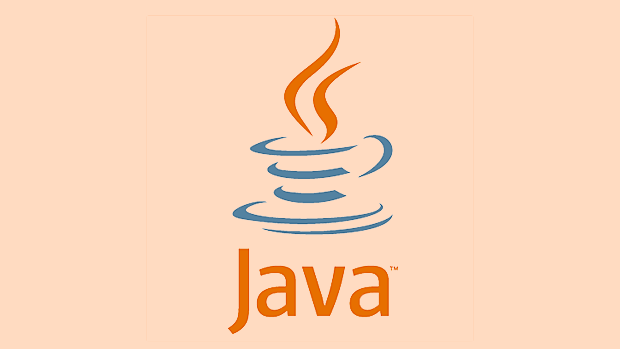Detecting and Avoiding Deadlocks in Java Multithreaded Programs
Jul 08, 2025 am 01:43 AMDeadlock refers to the phenomenon that multiple threads cannot continue to execute because they are waiting for each other's resources. Its generation requires four conditions: 1. Mutual exclusion, resources cannot be shared; 2. Hold and wait, threads do not release the occupied resources while waiting for other resources; 3. It cannot be preempted, resources can only be actively released by the holding thread; 4. Loop waiting, thread chains are waiting for each other. To detect deadlocks, you can view the "DEADLOCK" prompt in the thread stack through the jstack command, or use IDE tools, VisualVM and other visual tools to analyze. Methods to avoid deadlocks include: 1. Unify the locking order to break loop waiting; 2. Set a timeout mechanism, such as using tryLock(); 3. Reduce the granularity and range of locks; 4. Use concurrent tool classes such as ReentrantLock. In addition, we need to pay attention to issues such as live locks and resource hunger, and reasonably design thread collaboration mechanisms to ensure the stability and robustness of multi-threaded programs.

In Java multithreaded programming, deadlock is a common but easily overlooked problem. It usually occurs when multiple threads are waiting for each other's resources held by each other, causing the program to be stuck and unable to continue execution. The key to avoiding deadlocks is to understand the conditions in which they occur and adopt reasonable strategies to prevent them.

What is a deadlock?
The generation of deadlocks requires meeting four necessary conditions: mutual exclusion, holding and waiting, non-preemptive and circular waiting. In other words, as long as these four conditions are valid at the same time, a deadlock may occur.

- Mutual Exclusion : Resources cannot be shared and can only be used by one thread at a time.
- Hold and wait : The thread does not release the already held resources while waiting for other resources.
- Not preemptive : Resources can only be released actively by the threads that hold them and cannot be forced to be deprived.
- Loop waiting : There is a thread chain, each thread is waiting for the resources held by the next thread.
If your program has "no threads move" phenomenon, it is likely that it has encountered a deadlock.
How to detect deadlocks?
The most direct way is to assist detection with tool:

- Use the
jstackcommand to analyze thread stack information. After running your Java application, open the terminal and enterjstack <pid></pid>to view the "DEADLOCK" prompt in the output. - IDE built-in tools or visual tools such as VisualVM can also help you intuitively discover dependencies between threads.
- The thread does not respond for a long time, or some operations have not been completed for a long time, which may also be a deadlock signal.
It is recommended to do thread inspections regularly during the development stage, rather than wait until it is launched before troubleshooting.
How to avoid deadlocks?
To completely avoid deadlocks, you can start by breaking one of the four conditions mentioned above. Here are some commonly used practice methods:
- Unified locking order : Ensure that all threads request resources in the same order. For example, always acquire the A lock first and then the B lock, so that there will be no loop waiting.
- Set the timeout mechanism : Use
tryLock()method instead ofsynchronized. If the lock cannot be acquired within the specified time, the current operation will be abandoned and the existing resources will be released. - Reduce the granularity and range of locks : Only locks are added where synchronization is really needed, and try to shorten the lock holding time.
- Use the tool classes provided by the concurrent package : For example,
ReentrantLocksupports trying to acquire locks, timeout control and other functions, which is more flexible than nativesynchronized.
For example, deadlocks are prone to occur when two threads acquire two locks in different orders. But if the lock must be acquired in a fixed order, this problem can be effectively avoided.
Things to note outside deadlock
In addition to deadlocks, you should also pay attention to similar issues, such as live locks (threads constantly retry but always fail) and resource hunger (some threads do not get execution opportunities for a long time). Although these situations do not completely block the program like deadlock, they can also affect the stability and performance of the system.
Rationally designing thread collaboration mechanisms to avoid over-reliance on locks, while keeping the code simple and clear, is the basis for building robust multi-threaded applications.
Basically that's it.
The above is the detailed content of Detecting and Avoiding Deadlocks in Java Multithreaded Programs. For more information, please follow other related articles on the PHP Chinese website!

Hot AI Tools

Undress AI Tool
Undress images for free

Undresser.AI Undress
AI-powered app for creating realistic nude photos

AI Clothes Remover
Online AI tool for removing clothes from photos.

Clothoff.io
AI clothes remover

Video Face Swap
Swap faces in any video effortlessly with our completely free AI face swap tool!

Hot Article

Hot Tools

Notepad++7.3.1
Easy-to-use and free code editor

SublimeText3 Chinese version
Chinese version, very easy to use

Zend Studio 13.0.1
Powerful PHP integrated development environment

Dreamweaver CS6
Visual web development tools

SublimeText3 Mac version
God-level code editing software (SublimeText3)

Hot Topics
 Java development optimization method for file reading multi-thread acceleration performance
Jun 30, 2023 pm 10:54 PM
Java development optimization method for file reading multi-thread acceleration performance
Jun 30, 2023 pm 10:54 PM
In Java development, file reading is a very common and important operation. As your business grows, so do the size and number of files. In order to increase the speed of file reading, we can use multi-threading to read files in parallel. This article will introduce how to optimize file reading multi-thread acceleration performance in Java development. First, before reading the file, we need to determine the size and quantity of the file. Depending on the size and number of files, we can set the number of threads reasonably. Excessive number of threads may result in wasted resources,
 Detailed explanation of usage scenarios and functions of volatile keyword in Java
Jan 30, 2024 am 10:01 AM
Detailed explanation of usage scenarios and functions of volatile keyword in Java
Jan 30, 2024 am 10:01 AM
Detailed explanation of the role and application scenarios of the volatile keyword in Java 1. The role of the volatile keyword In Java, the volatile keyword is used to identify a variable that is visible between multiple threads, that is, to ensure visibility. Specifically, when a variable is declared volatile, any modifications to the variable are immediately known to other threads. 2. Application scenarios of the volatile keyword The status flag volatile keyword is suitable for some status flag scenarios, such as a
 Explore the working principles and characteristics of java multithreading
Feb 21, 2024 pm 03:39 PM
Explore the working principles and characteristics of java multithreading
Feb 21, 2024 pm 03:39 PM
Explore the working principles and characteristics of Java multithreading Introduction: In modern computer systems, multithreading has become a common method of concurrent processing. As a powerful programming language, Java provides a rich multi-threading mechanism, allowing programmers to better utilize the computer's multi-core processor and improve program running efficiency. This article will explore the working principles and characteristics of Java multithreading and illustrate it with specific code examples. 1. The basic concept of multi-threading Multi-threading refers to executing multiple threads at the same time in a program, and each thread processes different
 Exception handling in Java multi-threaded environment
May 01, 2024 pm 06:45 PM
Exception handling in Java multi-threaded environment
May 01, 2024 pm 06:45 PM
Key points of exception handling in a multi-threaded environment: Catching exceptions: Each thread uses a try-catch block to catch exceptions. Handle exceptions: print error information or perform error handling logic in the catch block. Terminate the thread: When recovery is impossible, call Thread.stop() to terminate the thread. UncaughtExceptionHandler: To handle uncaught exceptions, you need to implement this interface and assign it to the thread. Practical case: exception handling in the thread pool, using UncaughtExceptionHandler to handle uncaught exceptions.
 Detailed explanation of Java multi-threaded concurrency lock
Apr 11, 2024 pm 04:21 PM
Detailed explanation of Java multi-threaded concurrency lock
Apr 11, 2024 pm 04:21 PM
The Java concurrency lock mechanism ensures that shared resources are accessed by only one thread in a multi-threaded environment. Its types include pessimistic locking (acquire the lock and then access) and optimistic locking (check for conflicts after accessing). Java provides built-in concurrency lock classes such as ReentrantLock (mutex lock), Semaphore (semaphore) and ReadWriteLock (read-write lock). Using these locks can ensure thread-safe access to shared resources, such as ensuring that when multiple threads access the shared variable counter at the same time, only one thread updates its value.
 Multi-thread safety issues in Java - solutions to java.lang.ThreadDeath
Jun 25, 2023 am 11:22 AM
Multi-thread safety issues in Java - solutions to java.lang.ThreadDeath
Jun 25, 2023 am 11:22 AM
Java is a programming language widely used in modern software development, and its multi-threaded programming capabilities are also one of its greatest advantages. However, due to the concurrent access problems caused by multi-threading, multi-thread safety issues often occur in Java. Among them, java.lang.ThreadDeath is a typical multi-thread security issue. This article will introduce the causes and solutions of java.lang.ThreadDeath. 1. Reasons for java.lang.ThreadDeath
 Java Multithreading Performance Optimization Guide
Apr 11, 2024 am 11:36 AM
Java Multithreading Performance Optimization Guide
Apr 11, 2024 am 11:36 AM
The Java Multithreading Performance Optimization Guide provides five key optimization points: Reduce thread creation and destruction overhead Avoid inappropriate lock contention Use non-blocking data structures Leverage Happens-Before relationships Consider lock-free parallel algorithms
 Java multi-thread debugging technology revealed
Apr 12, 2024 am 08:15 AM
Java multi-thread debugging technology revealed
Apr 12, 2024 am 08:15 AM
Multi-threaded debugging technology answers: 1. Challenges in multi-threaded code debugging: The interaction between threads leads to complex and difficult-to-track behavior. 2. Java multi-thread debugging technology: line-by-line debugging thread dump (jstack) monitor entry and exit events thread local variables 3. Practical case: use thread dump to find deadlock, use monitor events to determine the cause of deadlock. 4. Conclusion: The multi-thread debugging technology provided by Java can effectively solve problems related to thread safety, deadlock and contention.






